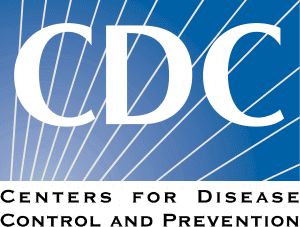- Ten-Year Surveillance of RSV Hospitalizations in Adults: Incidence Rates and Case Definition Implications
These are the results of a prospective, multicenter observational study with active monitoring conducted over 10 seasons (2010/2011 to 2019/2020) in 4-10 hospitals (depending on the season) that covered 21-46% of the region’s total population (around 5 million people). RSV-hospitalization IRs per 100,000 person-years (p-y) and 95% confidence intervals (CI) were calculated, and were stratified by age group (≥60, ≥70, and ≥80), RSV season, sex, and the entire study period. Two case definitions were compared: influenza-like illness (ILI) and the combined use of ILI and extended severe acute respiratory infection (ILI/SARI). A total of 40,600 hospitalizations of individuals aged ≥60 were included. The RSV-hospitalization IRs ranged from 21 to 402 per 100,000 p-y, varying by season, age group and case definition. The highest IRs were observed in those aged 80 and older. The ILI case definition underestimated RSV hospitalizations by 13% to 40% when compared to the ILI/SARI case definition. On average, approximately 1 every 1,000 adults ≥60 is hospitalized due to RSV.
- Long-COVID Incidence Proportion in Adults and Children Between 2020 and 2024
This is an EHR-based retrospective cohort study that included adult and pediatric patients with documented acute SARS-CoV-2 infection and two control groups: contemporary COVID-19 negative and historical patients (2019). They examined the proportion of individuals identified as having symptoms or conditions consistent with probable Long-COVID within 30-180 days after COVID-19 infection. Each network (the National COVID Cohort Collaborative (N3C), National Patient-Centered Clinical Research Network (PCORnet), and PEDSnet) implemented its own Long-COVID definition. They reported that excess incidence among SARS-CoV-2 patients was 1.5% in children and ranged from 5-6% among adults. This calculates out to over a million children and millions of adults in the U.S. - Effect of SARS-CoV-2 Infection on Sperm Telomere Length
This case-control study enrolled subjects who donated blood and semen samples. Fifty-six men with and 56 without prior COVID-19 infection, ages 18-45 years, were included. Semen analysis and hormonal levels were evaluated. The presence of SARS-CoV-2 RNA in semen and the sperm telomere length were assessed by quantitative polymerase chain reaction and associated with clinical and laboratory data. perm telomere length was significantly diminished in the COVID-19 positive group with a mean difference of 0.635 compared to the negative group (p = 0.041). Most individuals in the COVID-19 positive group were clinically classified as asymptomatic/mild illness, and all samples were collected more than 90 days after recovery. - Pediatric Gastrointestinal Tract Outcomes During the Postacute Phase of COVID-19
Here they looked at a cohort study of 1,576,933 pediatric patients. They report that children and adolescents with documented SARS-CoV-2 infection faced a 25% higher risk of newly diagnosed GI tract symptoms and disorders during the postacute phase compared with those without documented SARS-CoV-2 infection (incidence, 8.64% vs 6.85%).
Situation Dashboards

World Health Organization (WHO)
Novel Coronavirus (COVID-19) Situation from World Health Organization (WHO)

Johns Hopkins University (JHU)
Coronavirus COVID-19 Global Cases by the Center for Systems Science and Engineering (CSSE) at JHU

COVID-19 in US and Canada
1Point3Acres Real-Time Coronavirus (COVID-19) Updates in US and Canada with Credible Sources

Genomic Epidemiology COVID-19
Genomic Epidemiology of (COVID-19) Maintained by the Nextstrain team, enabled by data from GISAID.






